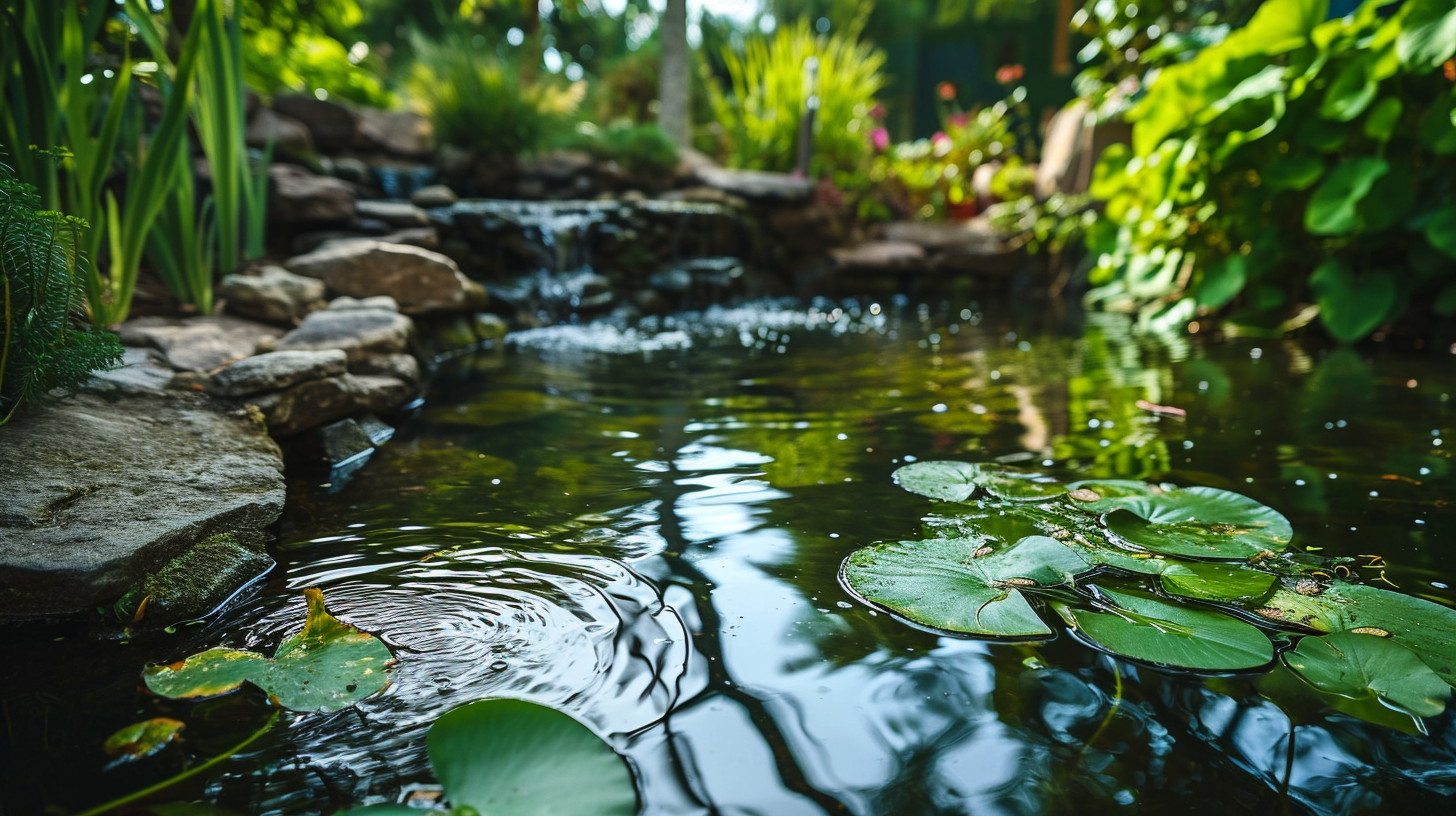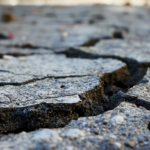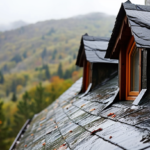Last Updated on 26th December 2023
In this comprehensive guide, we will explore the necessary steps to effectively repair a leaking pond liner. Whether the damage is minor or extensive, our professional advice will equip you with the knowledge and tools needed to restore your pond’s integrity. From assessing the damage and locating the leak to repairing and sealing the affected area, we will provide you with a step-by-step process to successfully fix the leak and prevent future occurrences.
Assessing the Damage
In order to determine the extent of the damage, it is necessary to conduct a thorough assessment of the pond liner. This assessment is crucial in evaluating the repair cost and deciding whether professional help is required. Start by examining the entire surface of the liner for any visible signs of wear, such as cracks, tears, or punctures. Pay close attention to the seams and folds as these areas are more prone to leaks. Additionally, inspect the surrounding area for any signs of water pooling or wet spots, indicating a potential leak. If the damage is minimal and can be easily repaired, you may consider fixing it yourself. However, if the damage is extensive or if you lack the necessary skills and tools, it is advisable to seek the assistance of a professional to ensure a proper and long-lasting repair.
Gathering the Necessary Tools and Materials
To successfully repair a leaking pond liner, it is imperative to gather all the required tools and materials for the task at hand. Choosing the right repair method is crucial to ensure a long-lasting solution. There are various methods available, including patching, sealing, or even replacing the affected section of the liner. Each method has its advantages and disadvantages, so it is essential to consider factors such as the size and location of the leak, as well as the type of liner material used. Additionally, properly cleaning and drying the repair area is essential for optimal adhesion and effectiveness of the repair. Removing any debris, algae, or other contaminants and thoroughly drying the area will help the repair material bond securely to the liner, minimizing the risk of future leaks.
Draining the Pond
Properly draining the pond is a crucial step in preparing for the repair process, as it allows for better access to the leaking area and facilitates a more efficient and effective repair. Pond maintenance is essential to ensure the longevity and functionality of the pond. However, it is crucial to consider water conservation during the draining process. To conserve water, it is recommended to redirect the drained water to a nearby garden or lawn, rather than letting it go to waste. Additionally, the use of a sump pump can help expedite the draining process. It is important to note that the water should be drained slowly to avoid causing damage to the surrounding landscape or disturbing any aquatic life within the pond. By taking these steps, pond owners can ensure a successful repair while also being mindful of water conservation.
Locating the Leak
By carefully inspecting the pond and systematically analyzing any potential weak points, such as visible cracks or areas of water loss, pond owners can effectively locate the leak. Finding the source of a leak in a pond liner is crucial in order to repair it and prevent further water loss. Common causes of pond liner leaks include age and deterioration, punctures or tears from sharp objects, and shifting ground or settling. Once the leak is located, pond owners can proceed with the necessary repairs. Patching the leak with a suitable pond liner repair kit or replacing the damaged section of the liner are common methods of fixing the issue. Regular inspections and maintenance can help prevent leaks and prolong the lifespan of the pond liner.
Preparing the Pond Liner for Repair
Thoroughly assessing the extent of damage and gathering the necessary materials and tools, pond owners can effectively prepare the pond liner for repair. The first step in this process is cleaning the pond and removing debris. Debris such as leaves, twigs, and algae can accumulate on the pond liner, making it difficult to properly identify and repair any leaks. To clean the pond, owners should use a fish-friendly net or skimmer to remove larger debris and then use a pond vacuum or siphon to remove any smaller particles. Once the pond is clean, owners can carefully inspect the liner for any visible damage, such as holes or tears. By taking these steps, pond owners can ensure a successful repair and restore the functionality and beauty of their pond.
Patching Small Holes and Tears
Using an appropriate adhesive and a small patch, pond owners can effectively repair a few minor holes and tears in the liner. However, if the damage is extensive or beyond the capabilities of DIY repair, alternative repair methods or professional assistance may be required. For small holes and tears, the first step is to clean and dry the affected area thoroughly. Then, apply a suitable adhesive, such as a pond liner patch kit, and press the patch firmly onto the damaged area. Allow the adhesive to cure according to the manufacturer’s instructions before refilling the pond. It is important to note that while DIY repairs can be a cost-effective solution for minor damage, larger or more complex issues may necessitate the expertise of professionals who specialize in pond liner repair.
Repairing Larger Damages
To effectively repair larger damages in a pond liner, it may be necessary to seek the expertise of experienced professionals in the field of liner repair. While small holes and tears in a pond liner can often be patched up easily by the pond owner, major leaks require more extensive repairs. These repairs typically involve identifying the source of the leak, removing the damaged section of the liner, and installing a new patch or liner in its place. Professional pond liner repair services have the knowledge, tools, and materials to accurately assess the extent of the damage and provide effective solutions. They can also ensure that the repaired liner is properly sealed and waterproofed, minimizing the risk of future leaks. If you are dealing with a major leak in your pond liner, it is advisable to contact a professional for assistance to ensure a successful repair.
Sealing the Repair Area
The sealing of the repair area is crucial to prevent any further leakage and maintain the integrity of the pond liner. When repairing a leaking pond liner, there are several methods to seal the repair area effectively. One option is applying waterproof sealant, which creates a barrier against water infiltration. This sealant is typically made of a flexible material that adheres to the liner’s surface, ensuring a watertight seal. Another method is using adhesive tape specifically designed for pond liner repairs. This tape is made of durable, waterproof material that can withstand the elements and provide long-lasting protection. It is important to carefully follow the manufacturer’s instructions when applying the sealant or tape to ensure proper adhesion and sealing. By taking these steps, the repair area can be effectively sealed, preventing any further leakage and maintaining the pond liner’s integrity.
Refilling the Pond
Several gallons of water will be needed to refill the pond after the repair is completed. When refilling the pond, it is important to consider water conservation techniques to minimize water waste. One effective technique is to collect rainwater in a storage system, such as a rain barrel, and use it to refill the pond. This not only reduces the need for tap water but also utilizes a natural water source. Additionally, implementing proper pond maintenance practices, such as regularly cleaning the pond and removing debris, can help prevent future leaks and reduce the amount of water needed for refilling. Another technique is to use a pond liner that is resistant to leaks and can withstand environmental factors, ensuring a longer lifespan for the pond and minimizing the need for frequent refilling. By incorporating these refilling techniques and practicing water conservation, pond owners can maintain a healthy and sustainable water ecosystem while minimizing water waste.
Preventing Future Leaks
Implementing regular maintenance practices, such as cleaning and debris removal, is crucial for preventing future leaks in the pond’s liner. Without proper maintenance, small tears or punctures can go unnoticed and lead to significant leaks over time. To prevent leaks, it is important to inspect the pond regularly and address any issues promptly. Regularly remove debris, such as leaves and branches, from the pond’s surface to prevent them from accumulating and damaging the liner. Additionally, consider adding a protective layer, such as a geotextile material, between the liner and the pond’s bed to provide an extra barrier against potential leaks. Long-term maintenance also includes monitoring water levels and repairing any leaks immediately to prevent further damage. By implementing these preventive measures, pond owners can minimize the risk of leaks and ensure the longevity of their pond’s liner.




